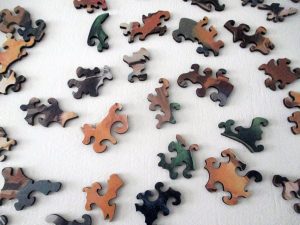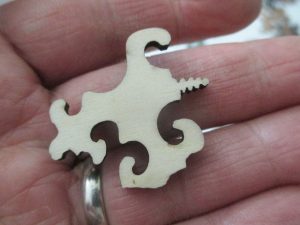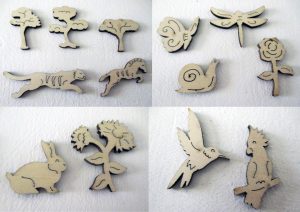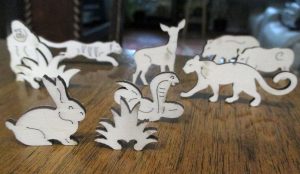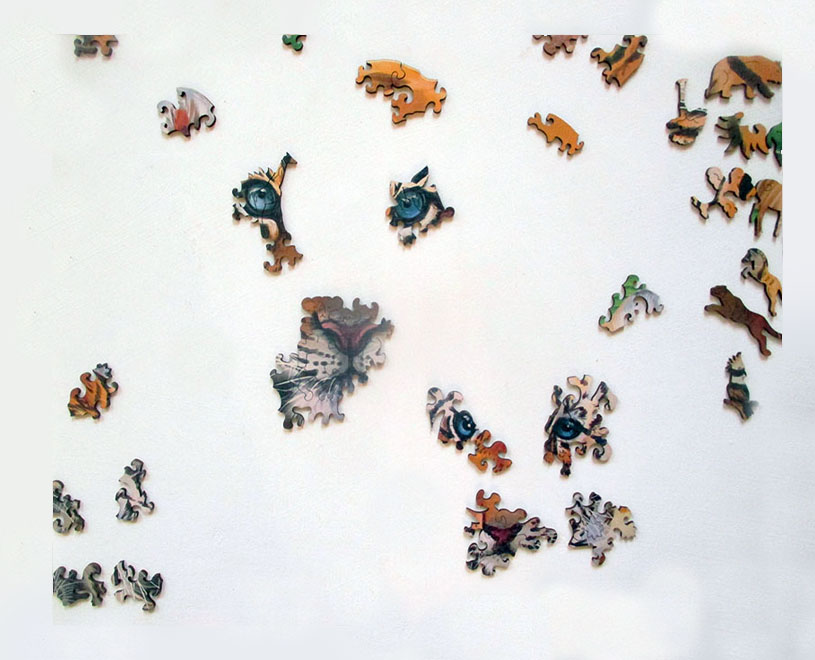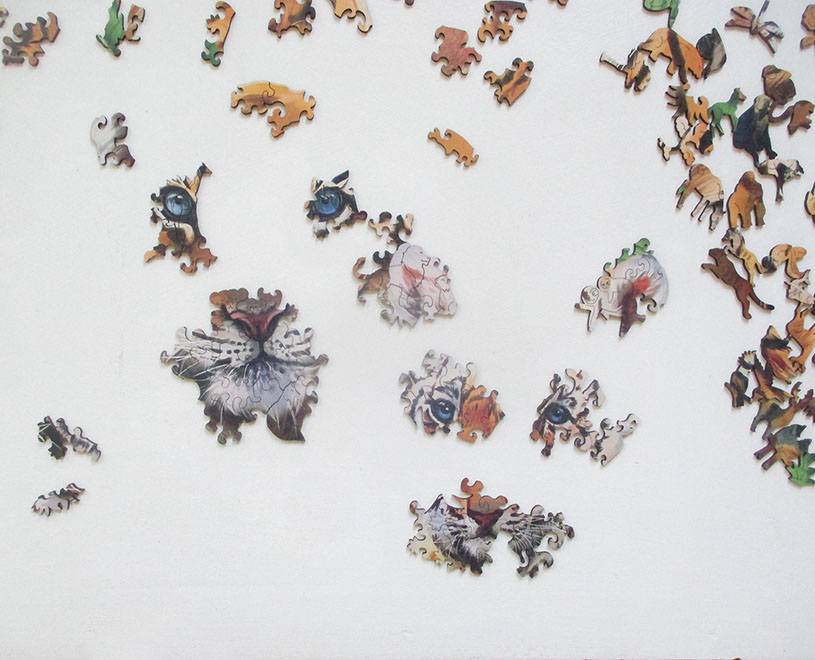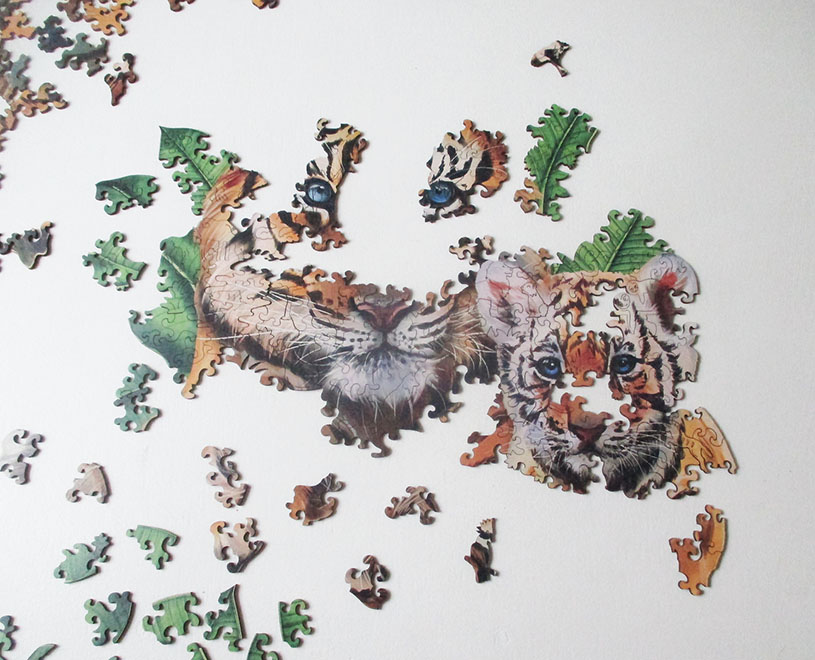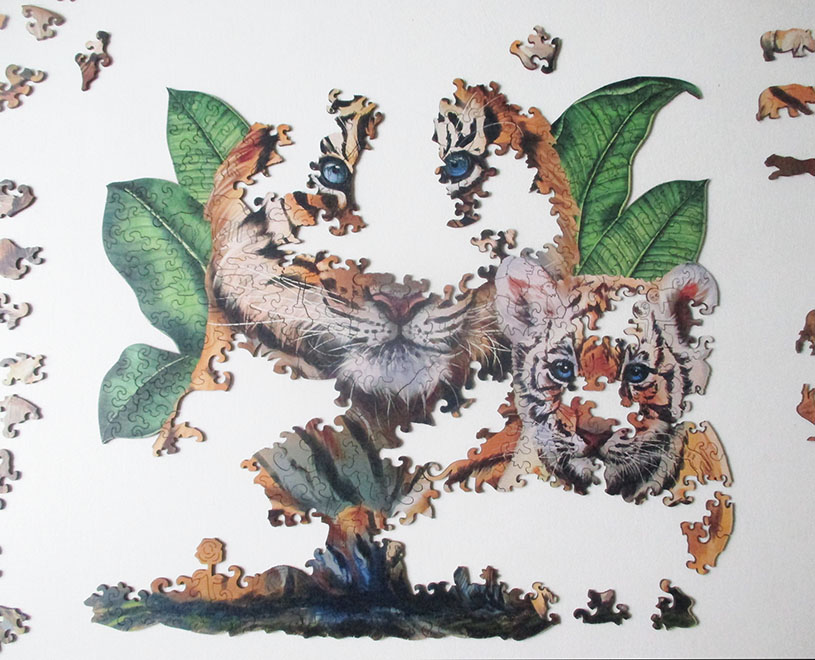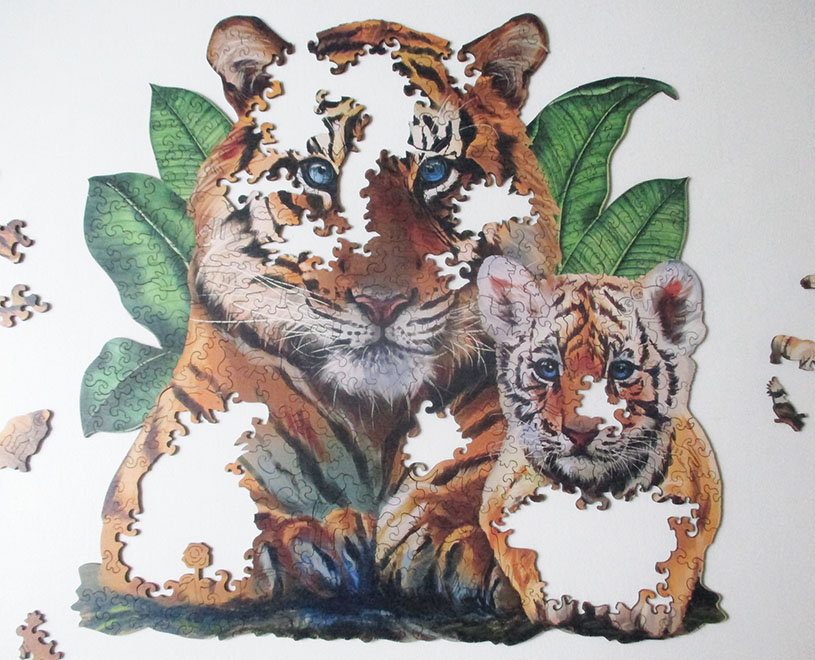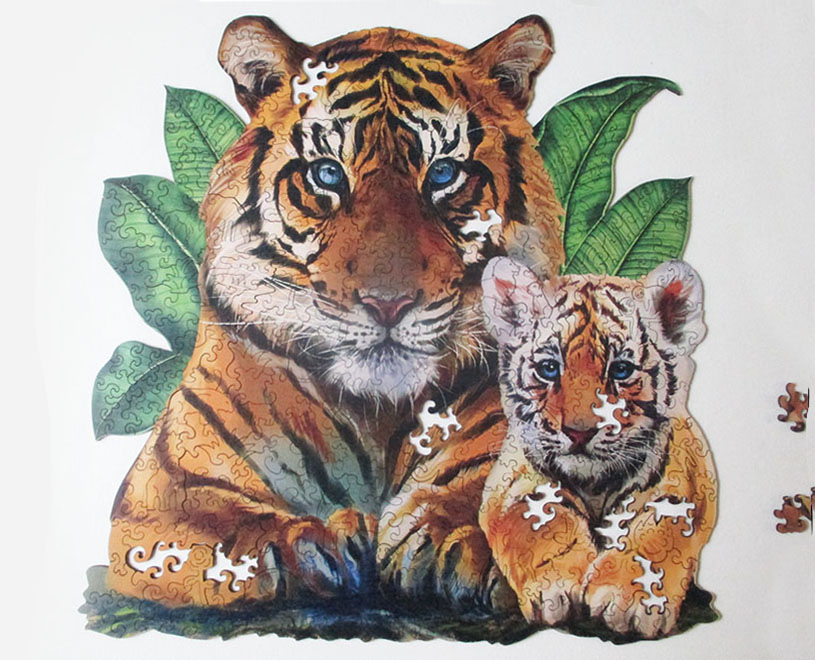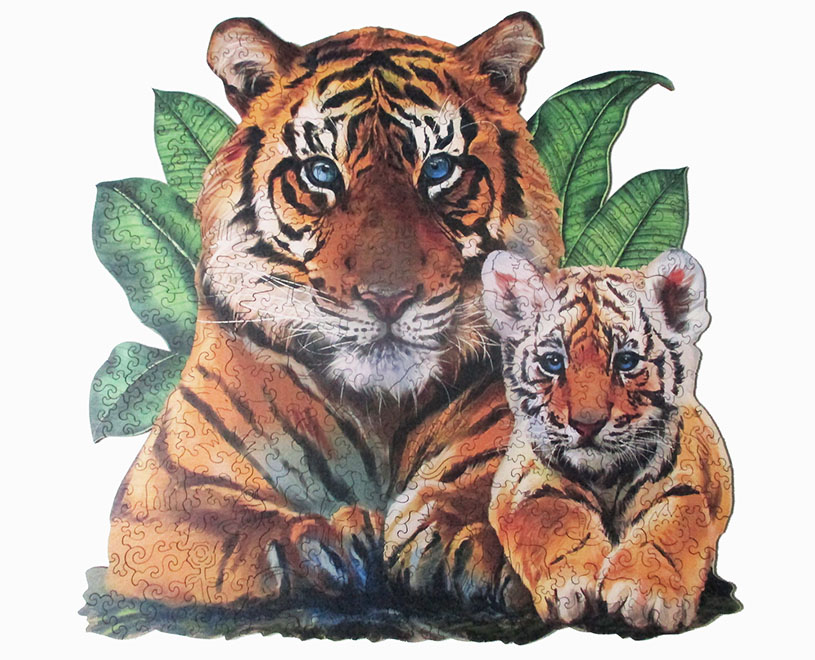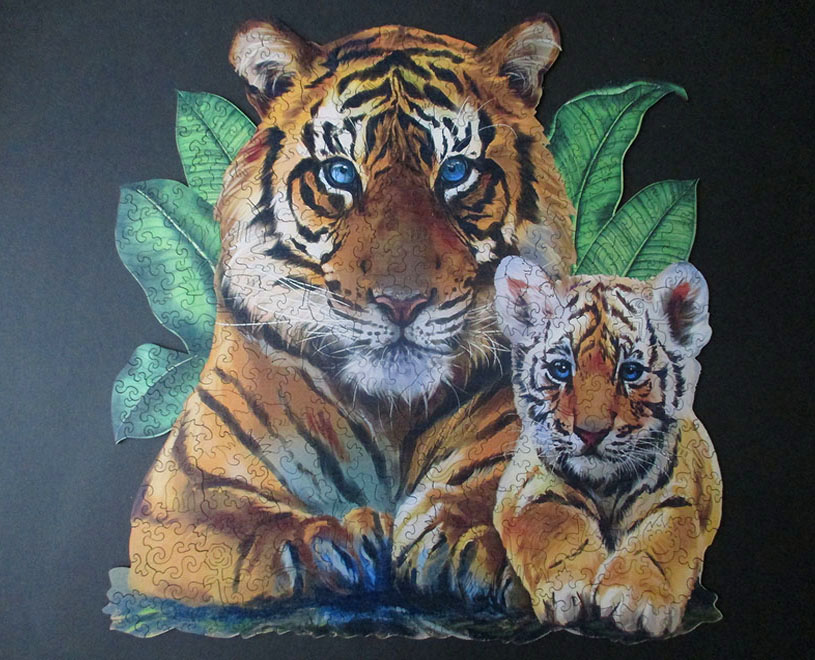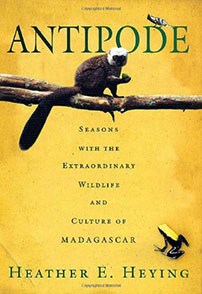This is a big coffee table book of wildlife photography. It has 125 pictures, of seemingly everything ranging from tiny mice and baby porcupines to the iconic wolves, orcas and pumas. (Though not, as one blurb touted, a blue whale- there’s dolphins and plenty of humpbacks, no blue whale!) I really liked seeing the images of lesser-known animals like the fisher and the pine marten. The book is arranged by habitat types: forest, mountain slopes, grasslands or prairies, seashore, freshwater lakes and rivers, and the last chapter is of the two extremes- polar arctic and deserts. Although oddly, that section has only a few images of desert animals, and the text about desert life overlaps the pages that are still showing you arctic animals. The text feels scattered to me. It has random facts about the wildlife, but leans towards flowery language praising their beauty and strength. I didn’t mind that too much, really the only thing that lessened my appreciation of this book is how awkward it is to hold. It’s very wide when the pages are open, and rather heavy, with nice thick glossy paper- sturdy, but unless you have it laid out on a table to peruse, you’re actually glad to be done turning the pages and put it away. The photographs really are great though. Especially the ones of bats.
But now I have literally, no physical place to put this book on my shelves. It won’t fit lengthwise, standing on end or even laid sideways- any alignment, it hangs out too much over the shelf. I’ve had to put it up top, out of the way. What I really need is an actual coffee table, with my largest photo-heavy books on permanent display to be admired by visitors (they’re mostly of animals, a few art books and a great one on snowflakes). Except no one actually does that. Sit and admire the books. We used to have a coffee table in the middle of our living room, and it just felt like it got in the way and collected clutter. I don’t think I ever once saw a visitor (or any of the kids) sit down and open a book to look at the pictures. I suppose there’s too much online to look at now, ha.
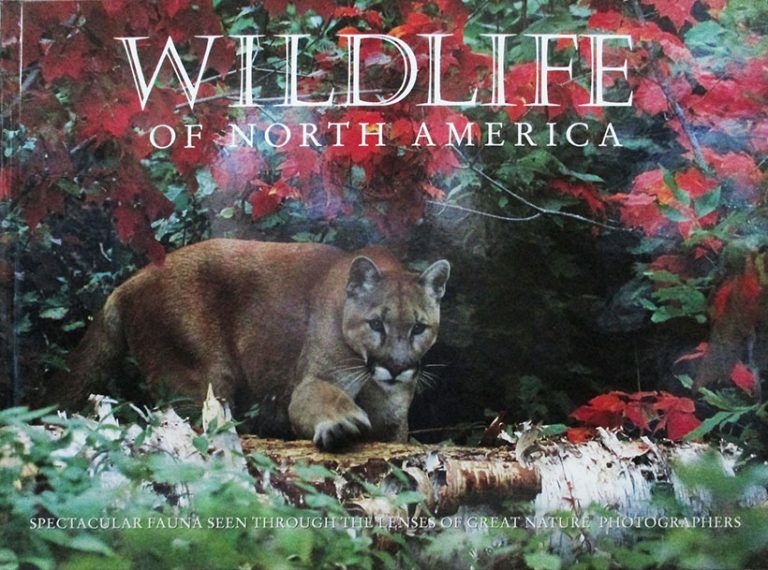
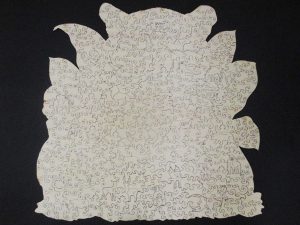
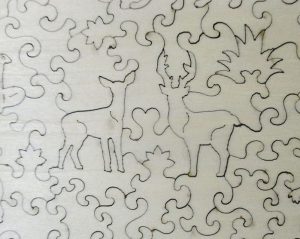
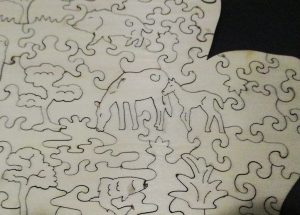
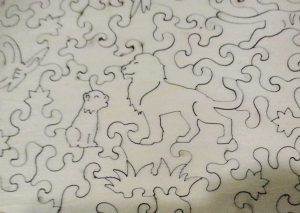
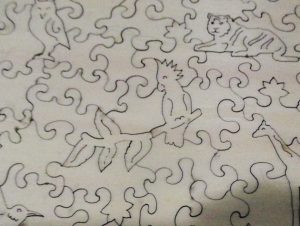

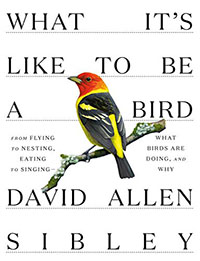

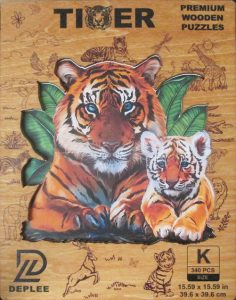 Many months ago I received a gift card for my birthday, and I can’t believe I waited this long to do the puzzle I picked out. It’s a wooden one, with “whimsy” shapes in the figure of animals and plants, and a shaped outline- both of which make this difficult! Don’t be fooled by the low piece count- it was a challenge! and a delightful one. I really really like wooden puzzles with all the crazy, wonky shapes. They’re so fun, and make your brain think and visualize things in a very different way.
Many months ago I received a gift card for my birthday, and I can’t believe I waited this long to do the puzzle I picked out. It’s a wooden one, with “whimsy” shapes in the figure of animals and plants, and a shaped outline- both of which make this difficult! Don’t be fooled by the low piece count- it was a challenge! and a delightful one. I really really like wooden puzzles with all the crazy, wonky shapes. They’re so fun, and make your brain think and visualize things in a very different way.